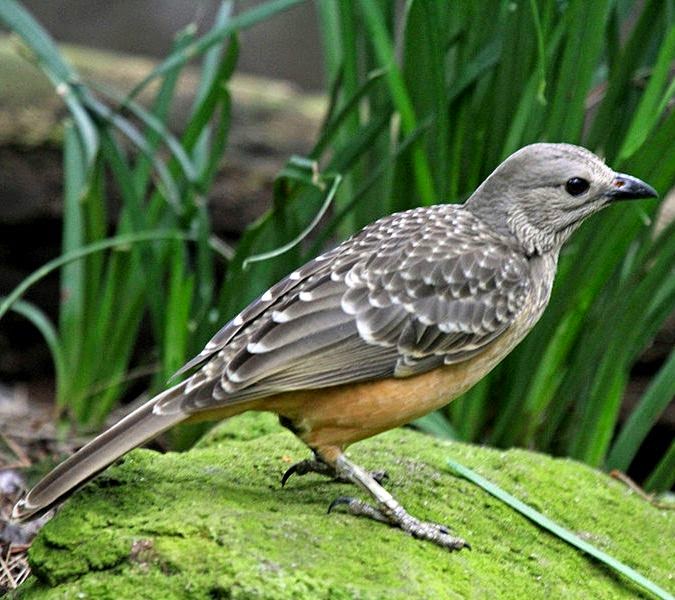 |
| Photo by Dick Daniels (Wikipedia) |
Common name:
fawn-breasted bowerbird (en); jardineiro-de-peito-fulvo (pt); jardinier à poitrine fauve (fr); pergolero pechipardo (es); braunbauch-laubenvogel (de)
Taxonomy:
Order Passeriformes
Family Ptilonorhynchidae
Range:
This species is found in north-western and eastern New Guinea, and also in northern Queensland, Australia.
Size:
These birds are about 30 cm long. The males tend to be larger than females, weighing 145-182 g while the females weigh 117-170 g.
Habitat:
The fawn-breasted bowerbird is mostly found in moist tropical forests, also using mangroves, dry savannas, dry scrublands, plantations, rural gardens and even urban areas. they occur from sea level up to an altitude of 1.800 m.
Diet:
They feed on fruits and insects, including beetles and caterpillars.
Breeding:
Fawn-breasted bowerbirds can breed all year round. They are polygynous, with males building elaborate bowers where they display to attract females. After matting the female builds the nest, a fairly large bowl made of sticks, vine tendrils and bark strips, which is lined with finer twigs and sometimes grass stems. The nest is placed in a tree or scrub, up to 10 m above the ground. There the female lays a 1-2 cream or pale olive green eggs with brownish markings which she incubates alone, but there is no information on the length of the incubation period. the chicks fledge about 3 weeks after hatching.
Conservation:
IUCN status – LC (Least Concern)
This species has a large breeding range and is reported to be fairly common to common in Papua New Guinea and locally fairly common in Australia. The population is suspected to be stable in the absence of evidence for any declines or substantial threats.







